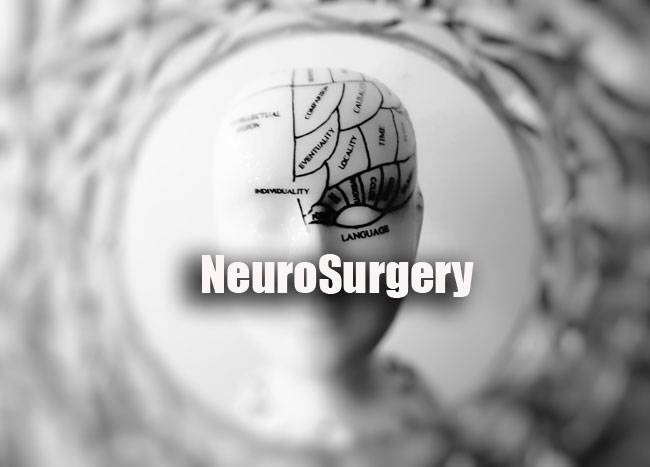Neurosurgery Quiz
Neurosurgery Quiz paper for the written examination is given below. Candidates who are looking for Neurosurgery exam Quiz paper can find in this section. The applied candidates who are getting prepared for the Neurosurgery can view this page for the Neurosurgery Last Ten Years Quiz Papers.

Download the Neurosurgery Quiz & Solutions & make it as a reference for your exam preparation. Take advantage of these Neurosurgery Quiz Papers in a proper manner to get qualifying Marks. Last 5 years Neurosurgery Quiz Papers provided here. Candidates who are applied for the above exam can check and download the Neurosurgery Quiz Papers from here.
Quiz on Neurosurgery
1. What are Renshaw cells?
(1) Inhibitory interneurons found in the spinal cord that release GABA
(2) Inhibitory interneurons found in the spinal cord that release glycine
(3) Excitatory interneurons found in the spinal cord that release glutamate
(4) Excitatory interneurons found in the spinal cord that release acetylcholine
2. The most common intramedullary spinal cord tumor in children is:
(1) Ependymoma
(2) Hemangioblastoma
(3) Astrocytoma
(4) Cavernoma
3. Most common cause of intractable temporal lobe seizure:
(1) Uncinate seizure
(2) Mesial temporal seizure
(3) Idiopathic seizure
(4) GTC seizure
4. “Salaam seizure” usually associated with:
(1) Petit mal epilepsy
(2) WEST Syndrome
(3) Tonic seizure
(4) Mesial temporal lobe sclerosis
5. Which seizure is said to be associated with HLA on chromosome 6?
(1) Grand mal epilepsy
(2) Drop attacks
(3) Juvenile myoclonic epilepsy
(4) West syndrome
6. Which of the following is not an broad spectrum anticonvulsant?
(1) Levetiracetam
(2) Sodium Valproate
(3) Phenytoin
(4) Lamotrigine
7. Drug of choice for tonic/atonic seizure:
(1) Lamotrigine
(2) Ethosuximide
(3) Benzodiazepines
(4) Valproate
8. Which anticonvulsant follow zero order kinetics?
(1) Phenytoin
(2) Valproate
(3) Carbamazepine
(4) Phenobarbital
9. SIADH like effect is seen in long term use of:
(1) Valproate
(2) Phenobarbital
(3) Valproate
(4) Carbamazepine
10. Usual time period for clonazepam withdrawl:
(1) 2-4 weeks
(2) 3-6 weeks
(3) 3-6 months
(4) 6-8 weeks
11. Which of the following free antiepileptics drugs level increase during pregnancy?
(1) Carbamazepine
(2) Phenobarbital
(3) Phenytoin
(4) Valproate
12. First line drug for status epilepticus:
(1) Valproate
(2) Lorazepam
(3) Levetiracetam
(4) lamotrigine
13. Greatest conduction velocity among the following:
(1) B fibres
(2) C fibres
(3) A beta
(4) Aalpha
14. False statement:
(1) Muscle grade 0 means total paralysis.
(2) Fasciculations are visible to naked eye.
(3) Fibrillations are visible to naked eye.
(4) Root value for ankle jerk is SI.
15. All of the following muscles supplied by posterior interosseous nerve except:
(1) Extensor carpi ulnaris
(2) Abductor pollicis longus
(3) Extensor digitorum
(4) Pronator quadratus
16. Nerve entrapped in Guyons canal:
(1) Median
(2) Ulnar
(3) Radial
(4) Musculocutaneous
17. Commonly used graft in peroneal nerve surgery:
(1) Anterior tibial nerve
(2) Superficial femoral cutaneous nerve
(3) Sural nerve
(4) Posterior tibial nerve
18. Most common site for pagets disease in spine:
(1) Cervical
(2) Lumbar
(3) Thoracic
(4) Sacral
19. “Bamboo spine” is a feature of:
(1) Pagets disease
(2) Ankylosing spondylitis
(3) Scheuermann’s kyphosis
(4) OPLL
20. Nurick grade 3 in cervical spondylosis:
(1) Myelopathy but able to walk
(2) Slight difficulty in walk but able to work
(3) Difficulty in walk but no need of assistance
(4) Chairbound
| Practice Set | MCQs |
| Quiz | Questions and Answers |
21. For better outcome spinal epidural hematomas should be evacuated with in:
(1) 4 hours
(2) 6 hours
(3) 2 hours
(4) 8 hours
22. Smith Petersen osteotomy can increase lordosis upto ___________ per level.
(1) 10%
(2) 5%
(3) 15%
(4) 20%
23. The most important laboratory test needed to diagnose bacterial meningitis:
(1) Gram stain and aerobic culture
(2) CBC with differential
(3) EIA and PCR
(4) MRI and CT head
24. The use of dexamethasone in meningitis has been questioned due to:
(1) Steroid tendency to worsen inflammation
(2) Possible decrease in drug penetration into cns
(3) Cost of steroid
(4) Steroid effect on lipid profile
25. Tuberculous meningitis is often identified by:
(1) Cellular bacterial gram stain
(2) Negative protein purified derative
(3) Paralysis of 6th cranial nerve
(4) Stress test
26. The most dangerous feature of an abscess is:
(1) Sepsis
(2) Loss of neurological function
(3) Increased ICP
(4) Development of meningitis
27. The most common cause of subdural empyema:
(1) Open trauma
(2) Meningitis
(3) Osteomyelitis
(4) Sinusitis
28. Most common site of Arachanoid cyst:
(1) CP Angle
(2) Cerebral convexity
(3) Sylvian fissure
(4) Vermis
29. True statement regarding treatment of arachanoid cyst are all except:
(1) No treatment of cyst without mass effect
(2) Ventricular drainage is effective & should be done routinely
(3) MRI is better than CT in differentiating from neoplastic cyst
(4) Low pressure shunt is preffered for shunting
30. Anterior fontanelle normally closes by sage.
(1) 9 months
(2) 18 months
(3) 24 months
(4) 30 months
31. Most common Craniosynostosis affecting single suture is:
(1) Coronal
(2) Saggital
(3) Metopic
(4) Lambdoid
32. Plagiocephaly is due to:
(1) Sagittal synostosis
(2) Unilateral coronal synostosis
(3) Metopic synostosis
(4) Bilateral coronal synostosis
33. Most common location of Encephalocele:
(1) Frontal
(2) Parietal
(3) Occipital
(4) Temporal
34. Risk of Myelomeningocele after one previous birth with MM is:
(1) 1-2%
(2) 2-3%
(3) 6-8%
(4) 4-5%
35. Surgical closure of myelomeningocele defect:
(1) At birth only
(2) Within 24 hrs
(3) Within a week
(4) Within 72 hrs
36. Not associated with Klippel feil syndrome:
(1) Low posterior hair line
(2) Brevicollis
(3) Limited neck movements
(4) Mental retardation
37. Most common sign & symptom associated with Tethered cord:
(1) Sensory deficit
(2) Bladder dysfunction
(3) Scoliosis
(4) Posterior spina bifida
38. Worst prognosis associated with:
(1) Chiari 1
(2) Chiari 2
(3) Chiari 0
(4) Chiari 3
39. True about Schizencephaly all except:
(1) May be unilateral or bilateral
(2) Absence of septum pallucidum in 80-90%
(3) Communicate with ventricles
(4) Lined by glial tissue / connective tissue
40. Sensitivity of prenatal USG to detect Spina bifida:
(1) 90-95%
(2) 80-85%
(3) 70-75%
(4) 50%
41. Treatment of Dandy Walker Malformation with aqueductal stenosis:
(1) Posterior fossa decompression
(2) Posterior fossa decompression with supratentorial ventricular shunting
(3) Posterior fossa cyst shunting
(4) None of the above
42. Most common cause of congenital hydrocephalus:
(1) Chiari malformation
(2) Aqueductal stenosis
(3) Traumatic SAH
(4) Dandy walker malformation
43. Conditions associated with pseudohydrocephalus all except
(1) Hydranencephalus
(2) Agenesis of corpus callosum
(3) Alzheimer disease
(4) 3rd ventricle colloid cyst
44. Complications of CSF shunting in NPH, all except:
(1) Subdural hematoma
(2) ICH
(3) Seizure
(4) Blindness
45. Torkildsen shunt is:
(1) Ventricle to plueral space
(2) Ventricle to atrial shunt
(3) Ventricle to cisternal space
(4) Ventricle to peritoneum



